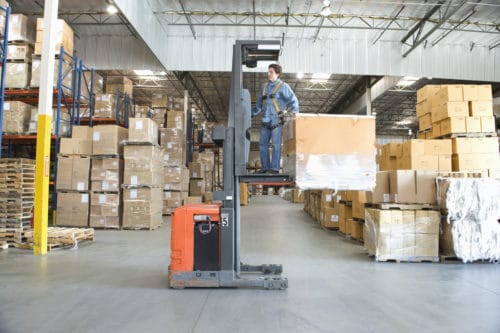Plastic Container Manufacturer Quality: Crafting Solutions for You
Plastic Container Manufacturer Quality: Crafting Solutions for You
Blog Article
Efficient Industrial Recycling Solutions for Sustainable Product Packaging: A Comprehensive Guide
That's where this thorough overview on efficient commercial recycling remedies for sustainable product packaging comes in. By checking out essential locations such as packaging material selection, making for recyclability, applying reusing facilities, collaborating with reusing partners, and monitoring and gauging recycling success, this overview will outfit you with the expertise and tools necessary to make enlightened decisions and drive favorable modification within your company. Whether you're a packaging specialist, sustainability supervisor, or just interested in the topic, this overview will certainly supply useful insights and methods to help you navigate the globe of lasting product packaging.
Packaging Product Choice
The selection of product packaging products plays a crucial function in ensuring the sustainability of industrial recycling solutions. When it involves sustainable packaging, the selection of products is type in decreasing ecological effect and making the most of reusing effectiveness. Selecting the right materials can help in reducing waste generation, conserve sources, and promote a circular economic climate.
Products like cardboard, paper, glass, and specific types of plastics can be recycled multiple times without shedding their top quality. On the other hand, materials that are tough to recycle, such as non-recyclable compounds or blended plastics, can develop challenges for the reusing procedure and may finish up in landfills or burners.
An additional factor to consider is making use of eco-friendly and renewable materials. Product packaging made from renewable energies, such as plant-based plastics or biopolymers, can assist reduce dependency on fossil gas and mitigate environment adjustment. Additionally, biodegradable materials break down naturally with time, reducing the accumulation of waste in landfills.
Moreover, the weight and quantity of product packaging products should be decreased to minimize transportation expenses and power consumption. Lightweight materials not only require less sources during production however likewise add to lower carbon discharges during transport.
Creating for Recyclability
In order to make certain the recyclability of product packaging products, thoughtful design is necessary. Creating for recyclability includes producing product packaging that can be conveniently arranged, separated, and processed in recycling facilities. One essential aspect of designing for recyclability is the choice of materials. Packaging developers need to focus on using materials that are commonly accepted for reusing and have established recycling infrastructures. Products such as glass, aluminum, and certain types of plastic, like PET and HDPE, are commonly reused and ought to be liked over products that are pricey or tough to reuse.
Another crucial factor to consider in developing for recyclability is the removal of unnecessary elements or products. By reducing the variety of layers, coverings, and added components, product packaging can be made simpler and much easier to reuse. Additionally, developers should aim to lower the usage of blended products, as they can make complex the recycling process.

Implementing Recycling Infrastructure
Effective execution of recycling facilities is vital for the success of industrial reusing solutions. Without appropriate infrastructure in location, the reusing process ends up being inadequate and ineffective, preventing the total goal of sustainable packaging.
To execute recycling infrastructure efficiently, several essential elements need to be considered. First of all, there ought to be a well-organized collection system that facilitates the splitting up and collection of recyclable products. This can click over here include marked recycling containers in public spaces, in addition to partnerships with waste administration firms for curbside pick-up and sorting.
Once collected, the recyclable products require to be moved to reusing facilities in a prompt manner. This requires efficient logistics and transport networks, guaranteeing that the products reach the suitable facilities right away.
At the recycling centers, advanced sorting and processing technologies must be in place to divide various kinds of products properly. This consists of the use of automated sorting equipments, site optical scanners, and manual sorting methods.
In addition, there ought to be a durable market demand for recycled products. This can be achieved through partnerships with producers and industries that utilize recycled products in their production processes. Developing a secure market for recycled materials incentivizes the reusing market and promotes the round economic situation.
Working Together With Recycling Allies

One trick facet of collaborating with recycling partners is the facility of clear communication channels. It is essential to develop open lines of interaction to promote the exchange of details, updates, and feedback. This allows both parties to remain educated regarding the progression of reusing efforts and resolve any kind of obstacles or issues that might emerge.
In addition, partnership can involve joint efforts in developing and executing reusing programs. Recycling partners can give useful insights and advice in creating effective collection systems and identifying the most proper recycling modern technologies. By collaborating, organizations and reusing partners can maximize the recycling procedure and lessen waste.
Furthermore, cooperation can prolong beyond the functional aspects of reusing. It can also encompass advocacy and education campaigns. By joining forces, businesses and reusing partners can raise recognition regarding the significance of reusing and advertise the fostering of sustainable product packaging practices among customers and other stakeholders.
Monitoring and Measuring Recycling Success
To guarantee the performance of commercial recycling solutions and the success of sustainable packaging objectives, it is critical for companies and their reusing companions to develop an extensive system for monitoring and gauging recycling success (industrial metal packaging). Measuring and tracking recycling success enables organizations to analyze the effect of their reusing initiatives, recognize areas for enhancement, and established purposeful targets for future progress
One way to track recycling success is via using data collection and analysis tools. By gathering information on the quantity of packaging waste produced, the percent of waste that is reused, and the kinds of materials being recycled, businesses can acquire useful insights into their recycling performance. This data can then be examined to determine trends, patterns, and areas of inefficiency.
One more vital facet of monitoring and gauging reusing success is developing standard and clear metrics. This permits services to contrast their performance versus industry standards and track their progression over time. Metrics such as recycling prices, waste diversion rates, and greenhouse gas exhausts can supply a quantitative step of a company's reusing success.

Verdict
Finally, executing efficient commercial recycling options for sustainable product packaging calls for mindful consideration of product packaging material option, creating for recyclability, carrying out recycling framework, working together with reusing partners, and tracking and measuring reusing success. By incorporating these techniques, businesses can contribute to an extra he said environmentally-friendly and lasting strategy to packaging, minimizing waste and advertising the round economic climate.
By exploring crucial locations such as product packaging material choice, making for recyclability, executing reusing infrastructure, teaming up with reusing partners, and monitoring and measuring reusing success, this guide will furnish you with the understanding and devices required to make educated choices and drive favorable modification within your company. Product packaging designers must focus on the use of materials that are commonly approved for recycling and have developed recycling infrastructures.Partnership with reusing companions is important for the effective execution of commercial reusing solutions and the achievement of sustainable packaging objectives. By signing up with forces, services and recycling companions can elevate recognition about the value of reusing and advertise the adoption of sustainable packaging practices among consumers and other stakeholders.
By collecting information on the amount of product packaging waste produced, the percent of waste that is recycled, and the types of materials being recycled, organizations can acquire important understandings right into their recycling performance.
Report this page